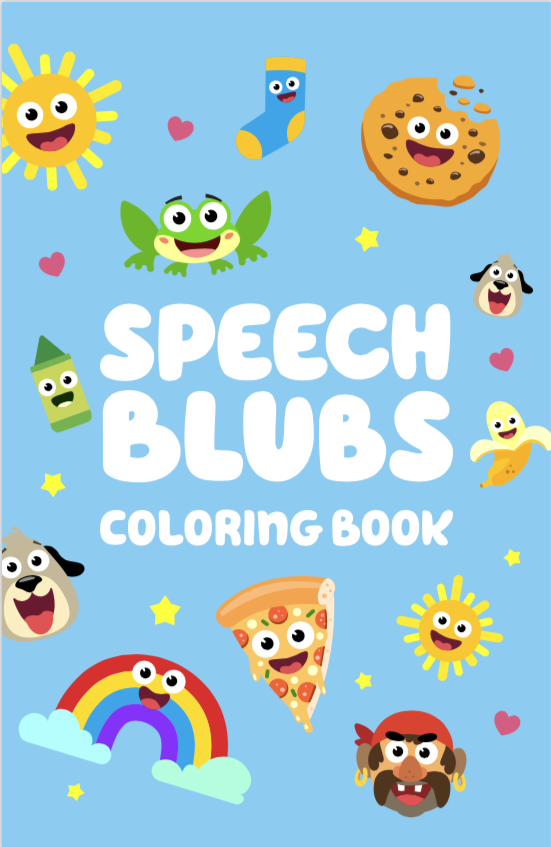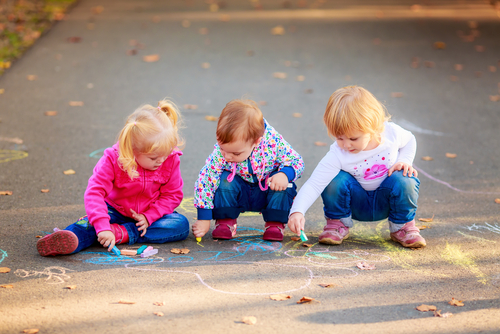The Importance of Drawing in Your Child's Development
In This Article
Many parents ask us about the development of drawing skills. When to start teaching drawing? What are the stages of drawing development? Can drawing be used as a communication tool?
There are several behaviors and activities that come naturally to children; one of those things is drawing. It doesn’t matter if they are using crayons, markers, paint or even chalk on a sidewalk, these mediums will all assist your child with expression.
Along with other forms of self-expression, like dance or singing, drawing can come with its own benefits for developmental skills. Drawing can also be used as a communication tool for children who are nonverbal or have limited verbal expression. What else does drawing help foster or develop? This blog will go over those specifics along with suggestions on when to start drawing and how!
Build Drawing Skills with a FREE Coloring Book
Before we continue with out benefits and developmental stages of drawing, don’t miss Speech Blubs free learning tool. This coloring book has all the stickers from the Speech Blubs app drawn and written in an easy to read font so your child can start spelling out words they learned in the app.

What are the Benefits of Drawing for Preschoolers?
Below you can find 6 main benefits of drawing. Read further to learn more about the skills a child gets from drawing.
- Fine motor movements
- Improve visual analysis
- Increase focus and concentration
- Work on hand-eye coordination
- Build confidence in their skills
- Encourages creative problem solving
The first benefit of drawing is that it enhances fine motor movements. Fine motor movements involve any little movements with the fingers, hands or wrists. Holding and manipulating writing implements represents one of the best ways to improve a child’s fine motor skills. We know that kids love to get feedback from adults and drawing provides that feedback immediately. They hold the color, put it to paper and see results. This feedback helps your child identify the best ways to produce the desired result.
The second benefit is that it benefits visual analysis. Young children can’t visualize things like adults can, such as size, comparing/contrasting, distance and textural differences. Drawing provides the perfect opportunity for your child to learn these concepts in a deliberate way. To support this kind of drawing at home, prompt your child to draw examples of big and small, rough and smooth, far and near, and so on.
We always have the goal (or wish) that our children will focus more. This skill becomes even more important once they enter school. Drawing will increase focus and concentration. Learning how to observe small details, concentrate on achieving a specific result, and practice tricky tasks helps your child mature. Although it might get frustrating for them if they have to “color between the lines,” give them breaks and allow them to draw in free space, first. You can work up to this skills to build their focus.

Hand-eye coordination is another benefit of drawing and coloring. This hand-eye coordination is important in athletic and recreational situations, as well as in academic scenarios such as penmanship lessons. For a hand-eye coordination boost, have your child draw an object while looking at it or copy a drawing that you made.
We love our kids to feel confident with whatever they are doing. Kids enjoy coming to us saying, “Look what I did!” Drawing can help with this important skill. When your child has an opportunity to create physical representations of his or her imagination, thoughts, and experiences, he or she gains confidence.
Along with visual analysis and concentration, drawing encourages your child to solve problems creatively. When he or she draws, your child must determine the best way to connect body parts, portray emotions, and depict specific textures. Providing specific drawing tasks, such as creating a family portrait, and talking about your child’s color, method, or special choices can help him or her develop stronger problem solving skills over time.
To help your child feel motivated to draw and create, use positive reinforcement. You may want to display finished drawings in your child’s room or in other areas of your home, include personalized drawings in letters to family members, and praise your child for practice and specific achievements.
Boost Your Child’s Speech Development!
Improve language & communication skills with fun learning!

What are the Stages of Drawing?
Now that you know all of the benefits of drawing, what are the stages? There are several different levels that children will progress through when it comes to drawing and coloring.
- Scribble (18 months to 3 years old): This stage occurs from 18 months until about three years of age. These are random marks and it shows that children are using colors in a fun way. As the child ages, the scribbles will change from uncontrolled to more controlled. For example, an 18 month old might only draw lines, while a three year old can draw circles.
- Pre-Schematic Stage (2-4 years old): This stage is typical of children between the ages of 2 to 4. The drawings become more complex, although they are usually unrealistic and look odd to adults. Instead of using realistic colors, they will just choose whatever color is their favorite or that they are drawn to. If they are asked to draw people, they will be very basic and have little to no features. Finally, objects float in free space, they aren’t anchored. For example, flowers will be in the sky instead of on the grass.
- Schematic Stage (5-8 years old): This stage is typical of children between 5 to 8. You will start to notice that their drawings of people become more proportional and more detailed. Colors become more realistic and stereotypical (grass is green, the sky is blue). Skyline and ground lines start to show so objects will start to go where they belong. Finally, they start to develop a pattern in the drawings. If they draw a house, it will look the same in all of their drawings.
- Preteen Stage (9-11 years old): This stage is typical of children between 9 to 11. The child’s drawings become far more detailed and much more spatial perspective is evident. This means that things will be appropriately placed on the paper. Children at this stage may become very frustrated if they are unable to create a realistic picture and may even vocalize that they can’t draw when they can.
As you can see, there are many benefits to drawing and letting your child be creative! I’d suggest waiting until 18 months to start introducing crayons, because any sooner than that, and your little one might want to eat the crayons instead of draw. Have fun and enjoy the process! Get lots of magnets for that fridge because you’re going to have a lot of artwork to display!
